Pulau Laut: on the front line of the China threat
On an idyllic island chain on the remote front lines of the contested South China Sea, military bases have sprouted like weeds. Fear is building as Beijing moves ever closer.
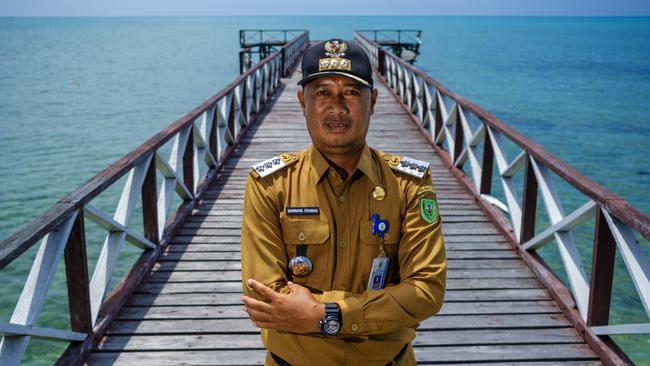
Bambang Erawan was born and raised in one of the many wooden fishing shacks that teeter on slender stilts over the turquoise waters of Pulau Laut – an idyllic Indonesian island on the remote front lines of the contested South China Sea – but he believes the only way to truly protect his home is to turn it into a military “mother ship” that can never be sunk.
As Indonesia quietly confronts the reality of a muscular China intent on staking its “nine-dash line” claim on the resource-rich and strategically important seas that connect all of maritime Southeast Asia, the idea of turning its most remote northern land mass into another Okinawa or Subic Bay is gaining support.
Erawan is the local government chief of Pulau Laut, a landmass so isolated its name translates as Sea Island.
It is so difficult to reach, even people in other parts of the Natuna archipelago – a chain of 154 islands on Indonesia’s northernmost tip – believe its 2700 residents must have mystical qualities to survive there. Yet, Erawan insists, it is cold, hard pragmatism that the island needs in the form of greater connectivity and a stepped-up military presence.
In recent years, as China has deployed its fishing fleets, coastguard, naval ships and now survey vessels into Indonesia’s Natuna waters, Jakarta has been building up its defence forces in the area from hundreds to thousands. Military bases have sprouted like weeds across the regency.
In 2005, the people of Pulau Laut ceded Sekatung Island – a small adjoining atoll – for a defence outpost that is now home to 20 marines and soldiers on nine-month rotations.
Yet both islands have only limited mobile coverage, no reliable transport connection to Greater Natuna – the main island in the chain, which takes seven hours to reach by fishing boat – and limited supplies of freshwater and electricity.
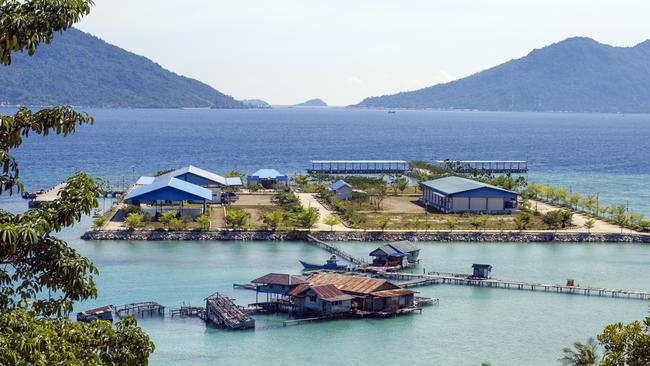
“Pulau Laut is the front porch of Indonesia and I am concerned that if it is disturbed it will disturb other regencies,” Erawan tells Inquirer on a recent visit to the island. “We are afraid that if anything happens here we can’t report it as soon as we should.”
Commander Raymond Simamora, the marine commander of Sekatung island, says his small force is there to “guard the outermost islands, which are considered one of Indonesia’s treasures”, but he admits they too struggle with logistical issues. They patrol up to five nautical miles from the island – they have no capacity to go any farther – and have seen Chinese ships pass within 10 nautical miles as recently as two months ago.
“We keep a close eye on them,” says Simamora. “We are facing a lot of challenges from illegal fishing, illegal entry and China’s illegal claim to the South China Sea. At this outpost it is important to maintain a presence, otherwise China could easily claim this sea.”
While Beijing’s disputed claim to most of the waters and islands in the South China Sea – as marked on its maps by nine lines in a U-shape – overlaps Indonesia’s exclusive economic zone, Jakarta has never recognised that claim.
It insists it is not part of the South China Sea dispute in which China claims historical rights to waters and land forms that Vietnam, Malaysia, The Philippines, Brunei and Taiwan say lie within their territorial waters. (A 2016 UN arbitral tribunal ruled China’s claims over islands within The Philippines’ EEZ illegitimate.)
Indonesia underscored its own claim to the southern end of the South China Sea, which falls within its EEZ under the UN Convention on the Law of the Sea, by renaming the area the North Natuna Sea in 2017, notwithstanding Beijing’s protests.
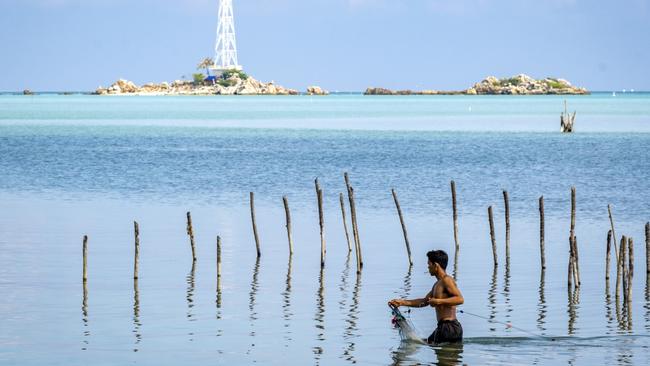
Yet since then Chinese and Vietnamese boats have been making increasingly brazen incursions into Indonesian waters, as close as 30 nautical miles from Pulau Laut, sparking fear and resentment among local fishers.
On Greater Natuna Island, the capital of Natuna regency, the local government official responsible for the archipelago says he supports the idea of making Pulau Laut a defence outpost as part of the “five pillars” vision of President Joko Widodo, who is popularly known as Jokowi, for safeguarding the area’s sovereignty.
Jokowi’s strategy, announced shortly after Indonesian navy authorities clashed with Chinese vessels in Natuna waters in 2016, involves building up tourism, environment, fisheries, oil and gas, and defence and security across the regency.
But Natuna mayor Wan Siswandi says that can’t be done without improving the main island’s infrastructure, and progress has been slow.
They are still waiting for approval for a maritime special economic zone. A multi-million dollar integrated fisheries facility in the island’s south – intended to help foster an internationally competitive fisheries export industry in the Natunas – sits idle, its cold stores mouldy with disuse.
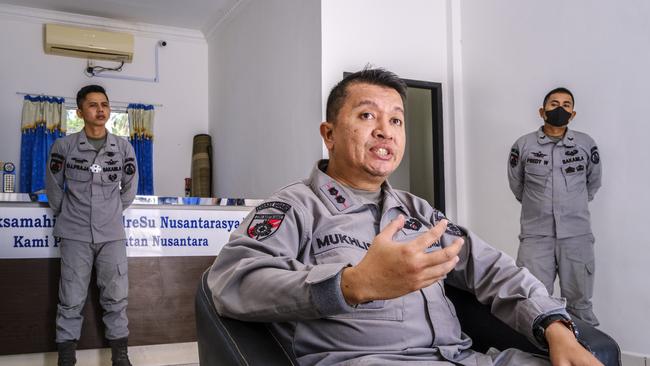
“We want to work with the President’s vision. We are donating land, but without more roads, electricity, water, hospitals and flights it won’t be sufficient,” Siswandi says.
“All the infrastructure must come in first to realise President Jokowi’s vision. We talk about tourism and building resorts, but all of this needs private sector investment. How can they come here without infrastructure?”
‘A lot of intimidation’
Illegal fishing stirs uncommon passions on Indonesia’s maritime frontline. Local fishermen – who mostly use rods and small wooden boats – say on any given day they must contend with up to 50 much larger Vietnamese vessels fishing in their waters.
None are more intimidating, however, than the massive Chinese fishing trawlers, up to 500 gross tonnes each, accompanied by Chinese coastguard that have been known to ram rival fishing boats and any maritime authorities that get in their way.
The Indonesia Ocean Justice Initiative, which monitors illegal maritime activity, tells Inquirer that at least two such Chinese boats – from the Lu Qing Yuan Yu fleet – are operating inside Indonesia’s EEZ, the latest of a string in recent months. There were eight in February. “Threats of illegal fishing by Vietnamese and Chinese fishing vessels at North Natuna seas in non-disputed areas are rampant,” it says.

Erawan says local fishermen feel “really angry about (China’s) nine-dash line because these are our waters”.
“There is a lot of intimidation,” he says. “We’re very afraid of those foreign fishers and their protectors (coastguard). There is a fear they could take our island.”
On Greater Natuna, the head of the island’s main fishermen’s co-operative says illegal fishing by foreign boats that trawl the seabed, removing fish stocks and the coral in which they breed, is worse than ever and that in the past few years they have had to fish farther afield for longer to get half their former catch.
Hendri, who goes by only one name, says Indonesian maritime patrols have dropped dramatically since former fisheries minister Susi Putjiasturi was replaced in 2019 amid Vietnamese protests over her policy of destroying seized foreign vessels.
Late last year Indonesia was forced to deploy a fleet of navy and coastguard vessels to shadow Chinese coastguard ships harassing an oil and gas exploratory drilling team operating at the Tuna block well within Indonesia’s EEZ.
The Indonesian ships spent almost three months doing so while also monitoring a Chinese survey vessel, Haiyang Dizhi 10, as it ostentatiously mapped Indonesia’s nearby seabed.
IOJI maritime security program manager Jeremia Humolong Prasetiya says the incident – from August to November – was unprecedented and reflected a “greater intensity” of Chinese incursions within the Natunas, even as similar acts of Chinese harassment have been recorded in Malaysia, The Philippines and Vietnam.
In the current climate, the recent announcement by the Quadrilateral Security Dialogue of a new Indo-Pacific Partnership for Maritime Domain Awareness to help Asian and Pacific nations track illegal fishing and dark shipping has been roundly cheered.
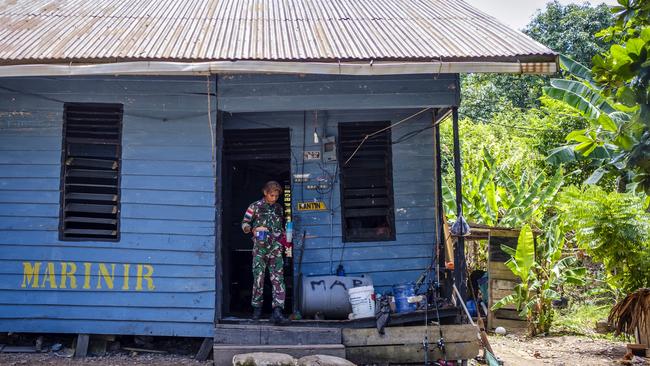
The data-sharing partnership will feed satellite technology and real-time surveillance to “fusion centres” in Singapore, India, Solomon Islands and Vanuatu, and on to countries across the region.
The initiative came out of last month’s Quad leaders’ meeting in Tokyo, the first attended by Anthony Albanese, who followed up that trip last week with a two-day visit to Indonesia where the new Prime Minister pledged to deepen trade and security ties with our northern neighbour.
Siswandi says Albanese could help by encouraging Australian investment in the Natunas. “If Australia wants to invest in electricity, maybe a solar farm in the Natunas, we would welcome that,” he tells Inquirer. “What’s important is electricity is available, whether it comes from public or private sources.”
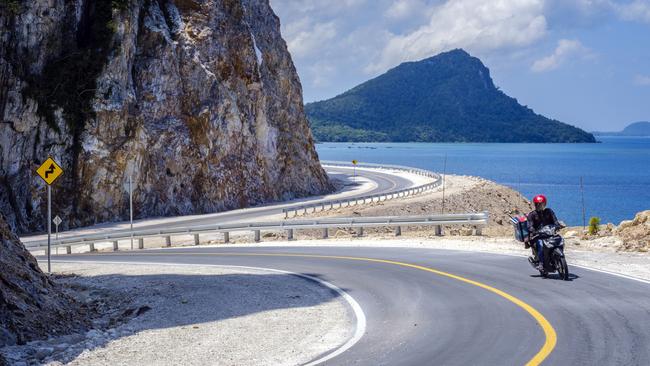
Jeremia Prasetiya says the Quad’s maritime surveillance initiative will be particularly useful to Indonesia, whose vast archipelagic waters are beyond its current enforcement capacity to patrol, by helping it direct scant resources to countering the most dangerous threats.
In late April Pung Nugroho Saksono, Indonesia’s surveillance and fleet operations director with the Maritime Affairs and Fisheries Ministry, admitted soaring fuel prices meant they could not afford to patrol as regularly and had to be “very sure before we intercept”.
The country’s coastguard, Bakamla, says it faces the same challenge. At Bakamla’s maritime early warning centre on Greater Natuna, a five-man station runs a 24-hour operation monitoring suspicious activity in Natuna waters all the way up to the 200 nautical miles EEZ via satellite, radar and long-range cameras – though the latter are under maintenance. One of two big screens in its monitoring room shows a gridlock of red and green ships, denoting cargo and tanker vessels, on a map dissected by coloured lines representing archipelagic sea lanes, Indonesia’s EEZ, its continental shelf and China’s widely-discredited nine-dash line.
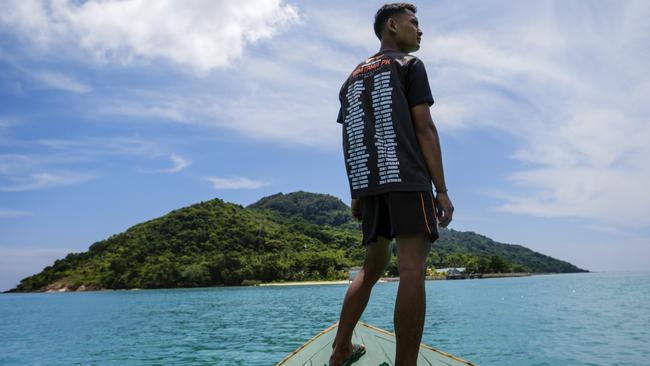
The map is a revelation. The South China Sea looks like an elongated swimming pool with Indonesia at one end, China at the other and maritime Southeast Asian nations set up like deckchairs around the perimeter. China’s nine-dash line is like a pool fence that blocks littoral nations’ access to the waters, from its southernmost Hainan coastline to Indonesia’s Natunas.
On the other screen are yellow flashing circles indicating suspicious activity – whether boats in distress or unidentified vessels that may have turned off their automatic identification system transponders to avoid detection.
“We pay really close attention to Chinese and Vietnamese fishing vessels coming in to fish in our waters,” says Lieutenant Colonel Mukhlis, Bakamla’s station chief. “There are a lot of cases near the continental shelf and EEZ.”
Bakamla was among the first to raise the alarm last August over the Chinese survey vessel. But as the country’s newest maritime enforcement agency, it has struggled for resources. Australia donated 10 rigid inflatable boats for countering people-smuggling 12 years ago, but only five of those are still operating.
They do well with what they have but the staff on Natuna say they need more sophisticated equipment and more boats.
The Bakamla team is enthusiastic about the Quad’s maritime surveillance initiative, which they say “will be really useful because we don’t have any access in the field”.

“Co-operation with Quad countries so far is only about joint exercises but there is no surveillance co-operation so far.”
As it has across the region, China’s strategic overreach has achieved what decades of hard-graft diplomacy and negotiations could not – making traditionally non-aligned Jakarta more receptive to closer defence ties with Western partners. Last month, Indonesian forces for the first time joined Australian soldiers and US marines in the Northern Territory-based disaster exercise Crocodile Response, while in August it hosts the largest Garuda Shield, an annual bilateral military exercise with the US.
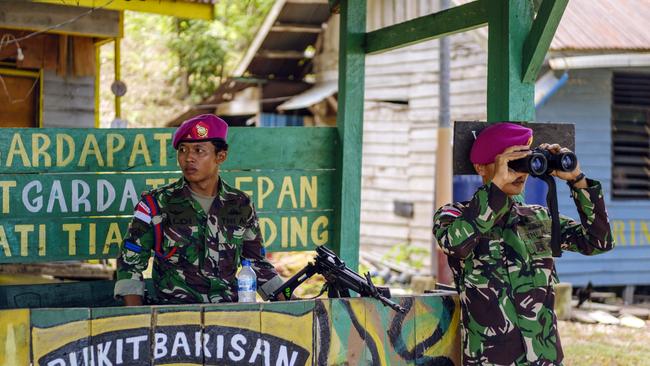
This year, however, up to 14 countries – including Australia, Japan, Britain, Singapore, Malaysia and Canada – will participate in exercises in Sumatra, Kalimantan and potentially also the Natunas with mock landing drills aimed at the recovery of islands occupied by enemy forces.
Regional defence analysts say Indonesia’s greater willingness to participate in multilateral exercises, and its enthusiasm for the Quad’s new maritime surveillance initiative, signifies a shift in its security direction.
“It’s quite clear there is a sense of unease in Indonesia and that it is moving more closely to these more trusted partners,” says Collin Koh, a maritime security expert with Singapore’s Rajaratnam School of International Studies.
“Indonesia does not want to unnecessarily provoke China because they still need Chinese investment but are also very keen to show they’re ready to defend their sovereign and maritime rights.
“I think they are hoping (through Garuda Shield) to send a signal that even if China believes Indonesia is weak, at least it has friends to back it up.”



To join the conversation, please log in. Don't have an account? Register
Join the conversation, you are commenting as Logout